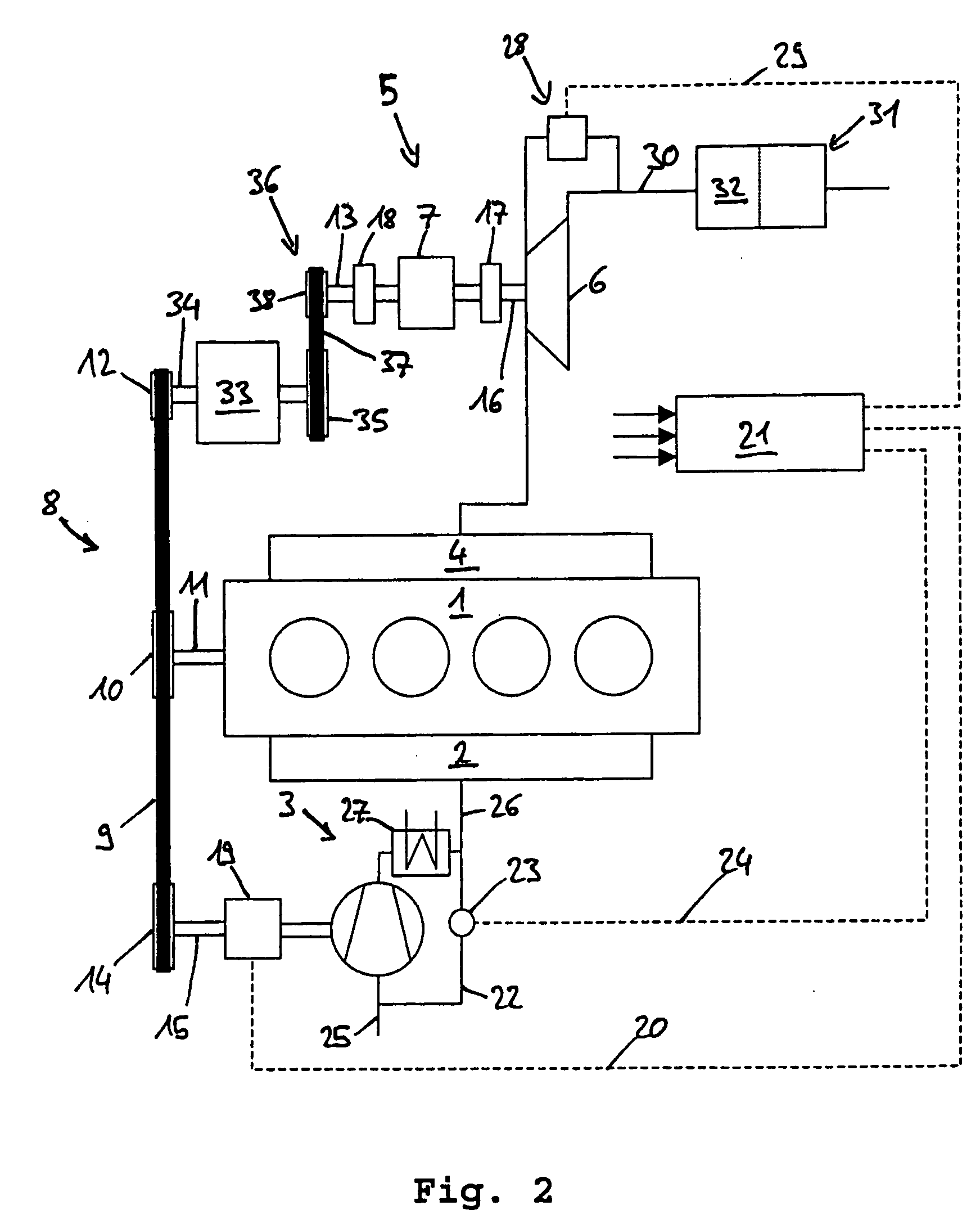Internal combustion engine comprising a mechanical charger and a turbo-compound
- Summary
- Abstract
- Description
- Claims
- Application Information
AI Technical Summary
Benefits of technology
Problems solved by technology
Method used
Image
Examples
Embodiment Construction
[0027]FIG. 1 illustrates a first version of the internal combustion engine 1 according to the invention. The internal combustion engine 1 is preferably a spark ignition engine for passenger cars. However, use for diesel engines, in particular for commercial vehicles, may also be envisaged. The internal combustion engine 1 has an inlet tract 2 and, assigned to this, a mechanical charger 3 and an outlet tract 4 and, assigned to this, a turbo-compound 5. The turbo-compound 5 has an exhaust gas turbine 6 and a reduction gear 7 coupled to the exhaust gas turbine 6. The internal combustion engine 1, the mechanical charger 3 and the turbo-compound 5 are coupled to one another by means of a belt drive 8. The belt drive 8 includes a belt 9, with a belt pulley 10 on a crankshaft 11 of the internal combustion engine 1, a belt pulley 12 on an output shaft 13 of the reduction gear 7 and a belt wheel 14 on a drive shaft 15 of the mechanical charger 3.
[0028] The exhaust gas turbine 6 is coupled t...
PUM
 Login to View More
Login to View More Abstract
Description
Claims
Application Information
 Login to View More
Login to View More - R&D
- Intellectual Property
- Life Sciences
- Materials
- Tech Scout
- Unparalleled Data Quality
- Higher Quality Content
- 60% Fewer Hallucinations
Browse by: Latest US Patents, China's latest patents, Technical Efficacy Thesaurus, Application Domain, Technology Topic, Popular Technical Reports.
© 2025 PatSnap. All rights reserved.Legal|Privacy policy|Modern Slavery Act Transparency Statement|Sitemap|About US| Contact US: help@patsnap.com



